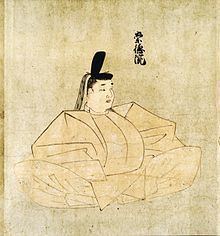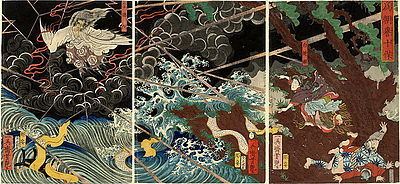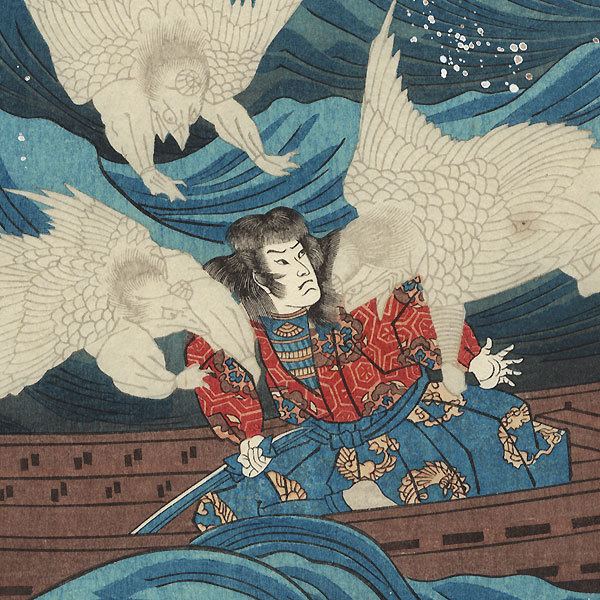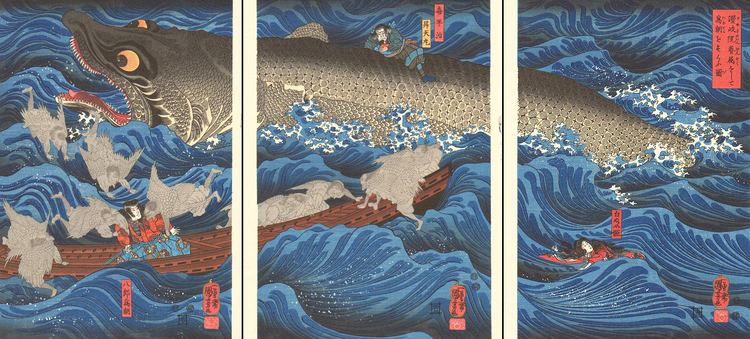Reign 1123–1142 Parents Emperor Toba Children Shigehito-shinno | Grandparents Emperor Horikawa Name Emperor Sutoku | |
 | ||
Burial Shiramine no misasagi (Kagawa) Similar People Emperor Go‑Shirakawa, Fujiwara no Tadamichi, Taira no Kiyomori, Taira no Masakado, Akihito | ||
Sutoku in the retired emperor sutoku by jens klimek
Emperor Sutoku (崇徳天皇, Sutoku-tennō, July 7, 1119 – September 14, 1164) was the 75th emperor of Japan, according to the traditional order of succession.
Contents
- Sutoku in the retired emperor sutoku by jens klimek
- Mystical power plant fantasy emperor sutoku
- Genealogy
- Events of Sutokus life
- Kugy
- Eras of Sutokus reign
- Legends
- References

Sutoku's reign spanned the years from 1123 through 1142.

Mystical power plant fantasy emperor sutoku
Genealogy

Before his ascension to the Chrysanthemum Throne, his personal name (his imina) was Akihito (顕仁).
Sutoku was the eldest son of Emperor Toba. Some old texts say he was actually the son of Toba's grandfather, Emperor Shirakawa.
First son: Prince Shigehito (重仁親王) (1140–1162).
Events of Sutoku's life
In 1151, Sutoko ordered Waka imperial anthology Shika Wakashū.
In 1156, after failing to put down the Hōgen Rebellion, he was exiled to Sanuki Province (modern-day Kagawa prefecture on the island of Shikoku). Emperor Sutoku's reign lasted for 19 years: 2 years in the nengō Tenji, 5 years in Daiji, 1 year in 'Tenshō, 3 years in Chōshō, 6 years in Hōen, and 1 year in Eiji.
The site of Sutoku's grave is settled. This emperor is traditionally venerated at a memorial Shinto shrine (misasagi) at Kagawa. He was also enshrined (or sealed away...) in Shiramine shrine (Shiramine-jingū), Kyoto and Kotohira-gū in Kagawa Prefecture. The former is also associated with the god of football, worshipped by Kuge clan Asukai in times of yore, while the latter enshrined Ō-mono-nushi-no-mikoto, a god known to have restaured harmony in Yamato (or blackmailed Emperor Sujin...) in exchange for worship and nepotism.
The Imperial Household Agency designates this location as Sutoku's mausoleum. It is formally named Shiramine no misasagi.
Kugyō
Kugyō (公卿) is a collective term for the very few most powerful men attached to the court of the Emperor of Japan in pre-Meiji eras.
In general, this elite group included only three to four men at a time. These were hereditary courtiers whose experience and background would have brought them to the pinnacle of a life's career. During Sutoku's reign, this apex of the Daijō-kan included:
Eras of Sutoku's reign
The years of Sutoku's reign are more specifically identified by more than one era name or nengō.
Legends
After Sutoku's abdication and exile, he devoted himself to monastic life. He copied numerous scriptures and offered them to the court. Fearing that the scriptures were cursed, the court refused to accept them. Snubbed, Sutoku was said to have resented the court and, upon his death, became an onryō. Everything from the subsequent fall in fortune of the Imperial court, the rise of the samurai powers, draughts and internal unrests were blamed on his haunting.
Alternatively, he was said to have transformed into an Ootengu (greater tengu), who, along with the nine-tailed kitsune Tamamo-no-Mae and the oni Shuten-dōji, are often called the “three great evil yokai.” of Japan.
